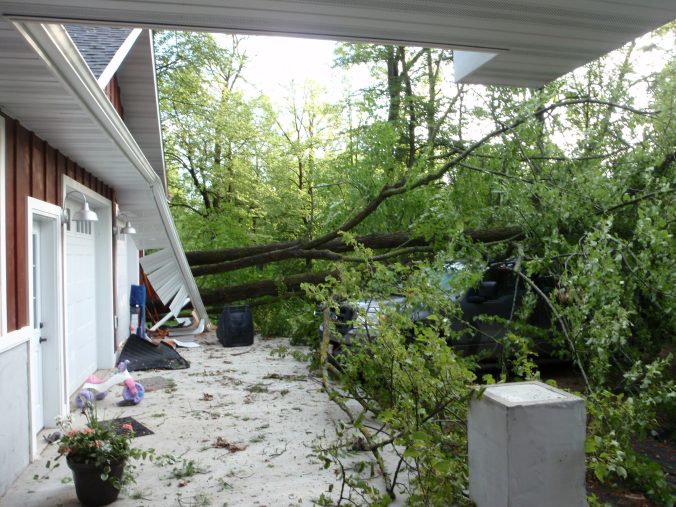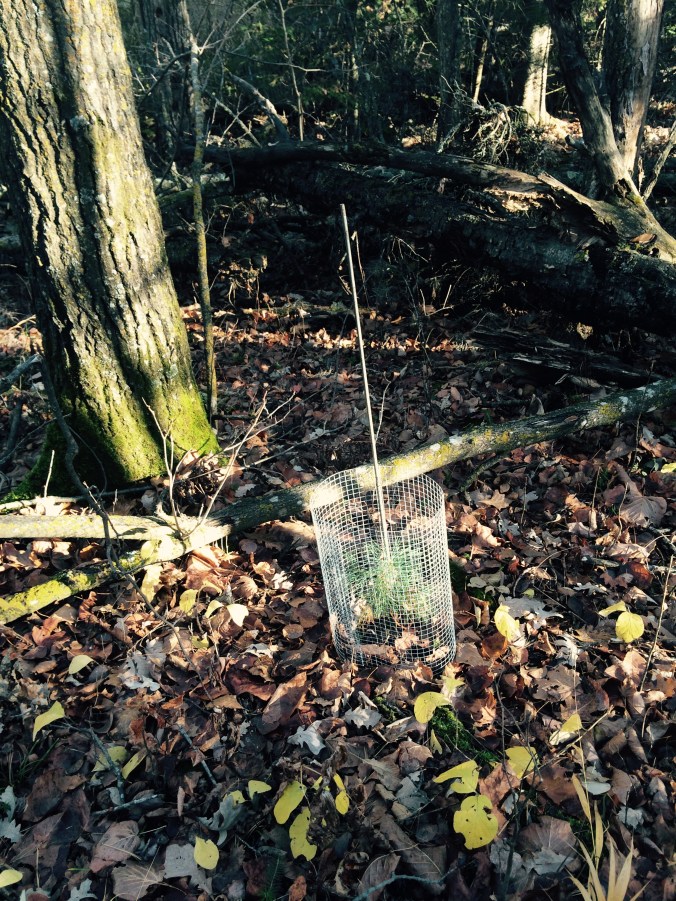As I had hoped, my office in the new house is a great place to watch birds visit our feeders. We have enjoyed watching the comings and goings of over a dozen species. Last week we had four different woodpeckers (red-bellied, pileated, hairy and downy) at our feeders at the same time! But with the birds come the squirrels. No doubt, squirrels can be entertaining, but do they have to eat so much? Are they making it harder for the birds get enough food?
We have both grey squirrels and red squirrels raiding our feeders. The grey squirrels, which may be really hybridized fox squirrels, are at least twice the size of the red squirrels. But the size difference does not seem to bother the aggressive red squirrels. They attack whenever a grey squirrel comes near my feeders. They chase up and down, spiraling around tree trunks, making death-defying leaps. The action rivals the best chase scenes from Hollywood.
From what I can tell, the birding (or bird-feeding) community online spends a lot of time discussing ways to keep squirrels out of feeders. Bird feeder makers tout the latest innovations in “squirrel-proof” feeders. I found at least one site on-line that stated the squirrels can keep birds from feeding effectively. But the biggest complaint and reason for controlling squirrels appears to be just how much expensive birdseed squirrels consume.
Because most bird-feeding enthusiasts like all kinds of wildlife, their typical solution is to provide alternative feed for the squirrels away from the bird feeders. This can include corn cobs and peanuts. This strategy sounds good in theory, but does it really work? I would think squirrels habituated to bird feeders and the goodies contained therein are not going to go out of their way to feed on something else.
I find myself getting outsmarted no matter what I do to keep the squirrels away from my feeders.The expensive “squirrel-proof” feeder I bought includes a wire grid that surrounds the feeding tube. But the dimensions of the grid are just large enough to permit a red squirrel to squeeze through. Following on-line instructions I built a platform feeder 10 feet from the nearest tree and five feet above ground. I found out that squirrels, at least our well-fed brood, can leap vertically over five feet.
I bought a small live trap, thinking I could remove the squirrels humanely and relocate them to a nearby state forest, or at least somebody else’s woods. But the squirrels have ignored it so far. Something too small to trip the gate, probably mice, has raided the trap and stolen the bait a few times. So much for being a nice guy.
Sometimes I can convince our dogs to go out and chase the squirrels away from the feeders, but the squirrels make fools of the dogs every time they begin the chase. Evidently, Mabel, our cockapoo, and Buddy, our springer spaniel, have not figured out that the squirrels are up a tree and out of sight before they take three steps out the door. Lately, the looks the dogs give me at the door suggest they are realizing the futility in giving chase.
My dad shows no mercy when it comes to squirrels at his feeders. Dad grew up in farm country where varmints like skunks and coyotes were routinely dispatched. To Dad, a squirrel raiding his feeders is a varmint. Dad has no compunction about treating his squirrel problem with “a little lead behind the ear”. Of course, he does this legally in accordance with Minnesota’s small game regulations. Dad is pretty proud of the sharpshooting skills he has developed defending his feeders over the years. But he admits the squirrels keep showing up year after year.
I tried using an old BB gun still around from when my kids were little. I was not trying to hit the squirrels, just scare them, which is just as well because the gun’s accuracy was questionable. But the BB gun quit working and now I am considering getting a pellet gun. With a Crosman Nitro Venom .177 Caliber complete with scope, I could act as judge, jury and executioner. But do I really want to shoot them? I have a firm belief in eating what you kill. When it comes to squirrels I’m not that hungry, especially with fresh venison in the freezer. I would feel guilty chucking a freshly killed squirrel into the brush.
My wife does not buy my lofty moral stance. She claims I really like engaging the squirrels in this contest of wits, even if I am losing. As she says, “if you got rid of the squirrels what would you do all winter?” As I write this, a huge grey squirrel is gorging himself at one of my feeders. Wait…did he just wink at me?







 We are fortunate to have a number of mature Eastern white pines (Pinus strobus), the tree the Ojibwe call zhingwaak, on our land. For me, the white pine symbolizes my love for this place called Minnesota. Tracing the silhouettes of pines at sunset on Island Lake as young boy, I first knew the joy of observing nature. I’ve wanted to live among the pines ever since.
We are fortunate to have a number of mature Eastern white pines (Pinus strobus), the tree the Ojibwe call zhingwaak, on our land. For me, the white pine symbolizes my love for this place called Minnesota. Tracing the silhouettes of pines at sunset on Island Lake as young boy, I first knew the joy of observing nature. I’ve wanted to live among the pines ever since.


















 everal days of work, the building site looks like a battlefield. I’ve learned a lot about felling trees and fixing chainsaws. So far, I’ve only had one near-miss in the category of getting clobbered by a falling tree, and that was one that got hung up in another tree. I’ve learned that happens a lot with basswoods and their large canopies.
everal days of work, the building site looks like a battlefield. I’ve learned a lot about felling trees and fixing chainsaws. So far, I’ve only had one near-miss in the category of getting clobbered by a falling tree, and that was one that got hung up in another tree. I’ve learned that happens a lot with basswoods and their large canopies. Finally, I have learned that I am not a logger. In the land where Paul Bunyan was born, Minnesota’s rich logging history is often romanticized. Although I’ve gotten somewhat proficient at the job, I have found no romance in the work. I don’t think I would have fit in among the men in the logging camps of yore. Call me a tree hugger, but I don’t like cutting down living trees. I think about the tons of carbon dioxide all that foliage processes. I could try to figure out the carbon footprint of our home, and determine whether the energy-efficient design offsets the biological impact. Or I could, and probably will, plant more trees to replace those I cut down.
Finally, I have learned that I am not a logger. In the land where Paul Bunyan was born, Minnesota’s rich logging history is often romanticized. Although I’ve gotten somewhat proficient at the job, I have found no romance in the work. I don’t think I would have fit in among the men in the logging camps of yore. Call me a tree hugger, but I don’t like cutting down living trees. I think about the tons of carbon dioxide all that foliage processes. I could try to figure out the carbon footprint of our home, and determine whether the energy-efficient design offsets the biological impact. Or I could, and probably will, plant more trees to replace those I cut down.